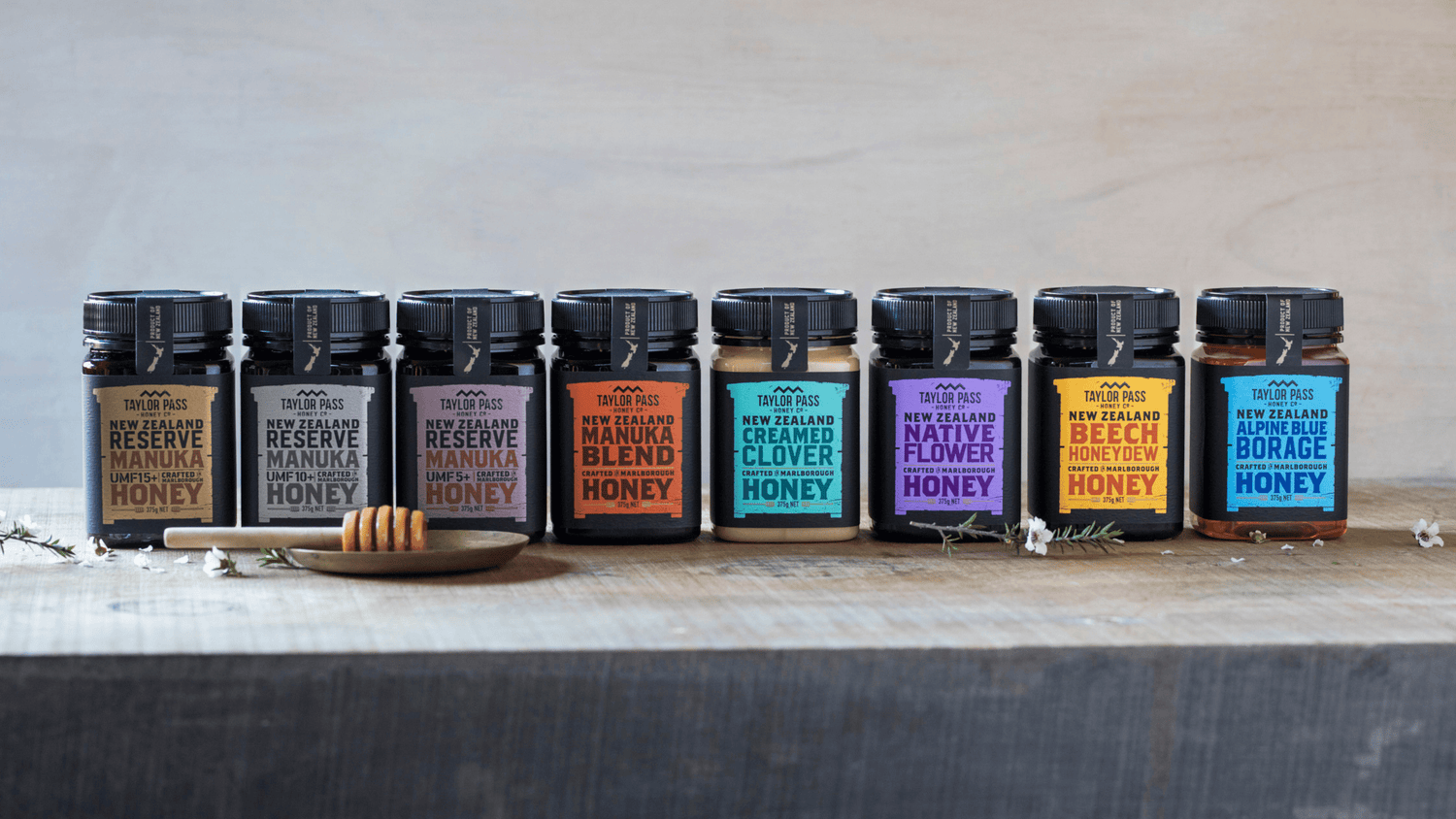What is Multifloral vs Monofloral Mānuka Honey?
Mānuka honey is the most famous honey found here in New Zealand. There are over 35 species within the Mānuka family of shrubs and trees. Although the Mānuka bush blooms profusely during its season, the flowers are only available for a short period of time, which means there is only a limited supply. The bees have to move quickly to gather pollen while the flowers remain in bloom. There are two basic types of Mānuka honey, monofloral and multifloral. Understanding the difference will help you choose the type of honey that is best for your needs.
Multifloral Mānuka Honey
Bees naturally travel from plant to plant collecting pollen from every source they can. Multifloral Mānuka honey is honey which the bees have made from the pollen collected from more than one source of pollen sources, such as from several types of flowers, trees, or shrubs, including multiple types of Mānuka species. Multifloral Mānuka honey will usually have a lower MGO than monofloral types of honey and are ideal for daily use. While they still contain beneficial antibacterial properties, vitamins, and minerals, the amounts are much smaller than those found in monofloral types of Mānuka honey.
Monofloral Mānuka Honey
Monofloral Mānuka honey is unique in that it contains mainly one source of pollen. A set of special tests is performed in laboratories to confirm this. If multiple pollens are found, the honey is classified as multifloral. If mostly Mānuka signatures are found, it is designated as monofloral. UMF rating is only ever applied to Monofloral Mānuka, so if you see UMF, you know it is definitely monofloral Mānuka.

The UMF Rating
The UMF, or Unique Mānuka Factor, rating is used to show the level of potency of Mānuka honey. The higher the rating, the more powerful it is when it comes to its ability to boost the body's immune system. Because monofloral honey has mostly pollen from Manuka flowers, it will naturally be much more potent than multifloral types of honey.
In essence, multifloral Mānuka is a diluted version of monofloral Mānuka as it also includes pollen from many different types of plants. Although it still offers healthy and nutritional benefits, they aren't as strong as they would have been if only Mānuka flowers had been used.
The UMF rating is an independent grading system based on 4 factors to ensure you get the very best Mānuka. MGO measures potency, Leptosperin measures authenticity, DHA is for Shelf Life and HMF is quality. Combined, these are the base for the UMF grading from UMF5+ all the way up to 20+ and above. From a natural sweetener to a high level of potency for additional nutritional support.
Monofloral vs Multifloral
Before you buy Mānuka honey, you should consider how you will be using it.
If you want to use it on a daily basis to sweeten your tea or use it as a sugar substitute in a recipe, a Multifloral Mānuka/Mānuka blend or a lower UMF such as UMF5+ will be more affordable and will also provide you with a level of nutrition that can be effective at supporting your immune system.
The higher the UMF rating, the more effective to support your immune system or help to rebuild your health after an illness. It is because of its higher potency, that Monofloral UMF Mānuka is much more expensive than multifloral Mānuka honey.
Knowing the difference between multifloral and monofloral types of Mānuka honey will help you choose the right one based on the UMF rating. At Taylor Pass Honey, all of our Mānuka honeys are rated for potency. This will help you choose the right type of honey for your individual needs. Taylor Pass Honey is B-Corp certified - all of our honeys are manufactured using the most environmentally-friendly and sustainable processes. We take every precaution to minimise the impact we have on our environment as well as the bees that produce the honey. Our goal is to provide you with the highest quality Mānuka honey products so that you will get the most benefit out of every spoonful.



